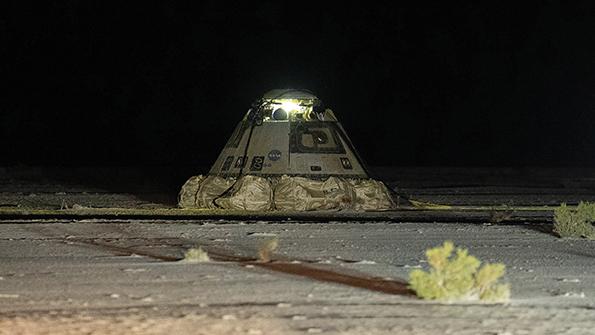
NASA and Boeing completed an extended three-month Starliner Crew Flight Test—sans crew—with a night landing Sept. 7 in White Sands, New Mexico.
Credit: Boeing
Boeing’s CST-100 Starliner Calypso completed a second star-crossed flight test, touching down in the New Mexico desert with the empty seats and spacesuits of the two NASA astronauts who were pulled from the return trip to Earth due to safety concerns. Time will tell if the mission was sufficient to...
Star-Crossed Starliner Flight Test Comes To A Close is available to both Aviation Week & Space Technology and AWIN subscribers.
Subscribe now to read this content, plus receive critical analysis into emerging trends, technological advancements, operational best practices and continuous updates to policy, requirements and budgets.
Already a subscriber to AW&ST or AWIN? Log in with your existing email and password.






